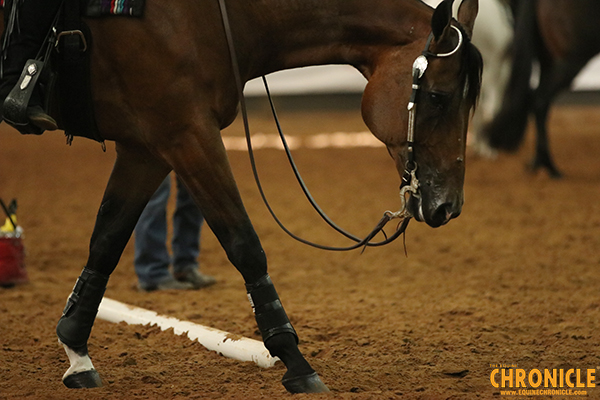If the Boot Fits- Can Leg Wraps or Boots Prevent Tendon Injury?
By: EC Intern Shelby Glessner
We all love the sporty look of horses with legs perfectly wrapped and ready to go for a round of jumping or a game of polo. You may have seen advertisements featuring boots intended to prevent tendon injuries in these athletic horses. But do reinforced, supportive sport boots really accomplish what the manufacturer promises?
In general, there are three main reasons people might choose to wrap the legs of their horses: external protection, simply for looks, or prevention of tendon injuries. While certainly able to protect from cuts and scrapes or add some flashiness to your look in the Dressage ring, boots and wraps do not provide sufficient support against the forces experienced by an equine limb during exercise.
Research and its Limitations
There have been several studies that tested the efficacy of boots and wraps in terms of providing this type of support (see references below). These studies used the angle of the fetlock joint as a reference point to determine how much restriction of movement the boot provided. While these studies did show that some boots may somewhat prevent overextending of the fetlock joint, this does not mean that injury due to previous damage would be prevented.
One study using live horses on a treadmill was only conducted at the walk and trot, not at typical galloping speeds or jumping heights where we see a higher incidence of injury in a real-world situation. Since the boots provided minimal restriction of the fetlock at these low speeds, we should expect them to be even less impactful at higher speeds and intensities.
Another study used equine cadaver lower limbs and a loading mechanism to measure support provided by various types of boots. While this study did again show that boots can limit the extension of the fetlock joint, it should be noted that in a live horse’s limb, the joint will have the support of the structures of the rest of the leg, and the effect of the boot will not be as significant.
True Causes of Tendon Injury
In both horses and humans, clinical tendon injury follows a misuse of already damaged tissue. For a human, this prior degradation would show up as tendonitis. Unfortunately, we don’t see symptoms of damage in equine tendon until it is too late, and the true injury has already occurred.
In practice, tendon injury is, interestingly, more likely to occur when the horse’s muscles are fatigued, such as at the end of a race. Re-injury may also occur fairly easily if the horse was not given proper time to recover from an initial clinical injury. Remember that tendon injuries take a very long time to heal or may never do so completely.
Also consider that many, many equine athletes go their entire careers without tendon injury at all! In normal competitive situations, there is no reason that a healthy and sound horse should need the help of a boot or wrap for supportive purposes.
Wrap-up
This is all to say that, in healthy horses, leg wraps or boots do not provide sufficient support to prevent tendon injuries. Keep in mind that they also will not heal or cure tendon issues that are already present: only time and rest will suffice. While there are many valid reasons to put leg wraps on your performance horse, be a skeptical consumer and consider the research surrounding tendon injuries.
References
Arnoczky, S. P., M. Lavagnino, M. Egerbacher. 2007. Chapter Four, The Response of Tendon Cells to Changing Loads: Implications in the Etiopathogenesis of Tendinopathy. In: S. L-Y. Woo, PhD, DSc, A. F. H. Renström, MD, PhD, and S. P. Arnoczky, editors, Tendinopathy in Athletes. Blackwell Publishing, Malden, Massachusetts. 46-59.
Kicker, C.J., C. Peham, D. Girtler, T. Licka. 2010. Influence of support boots on fetlock joint angle of the forelimb of the horse at walk and trot. Equine Vet. J. (36, 8):769-771.
Smith, R. K. W., M. P. McGuigan, J. T. Hyde, A. S. G. Daly, C. H. Pardoe, A. N. Lock, A. M. Wilson. 2010. In vitro evaluation of nonrigid support systems for the equine metacarpophalangeal joint. Equine Vet. J. (34, 7):726-731.
About
Shelby Glessner is a graduate of Michigan State University’s Animal Science program. She spent an academic year working with renowned researcher Dr. Stephanie Valberg in the Equine Neuromuscular Diagnostic Lab at MSU’s College of Veterinary Medicine and has undertaken extensive science and equine related coursework. Passionate about education, she hopes to pursue a career advocating for research-based practices in animal agriculture.











